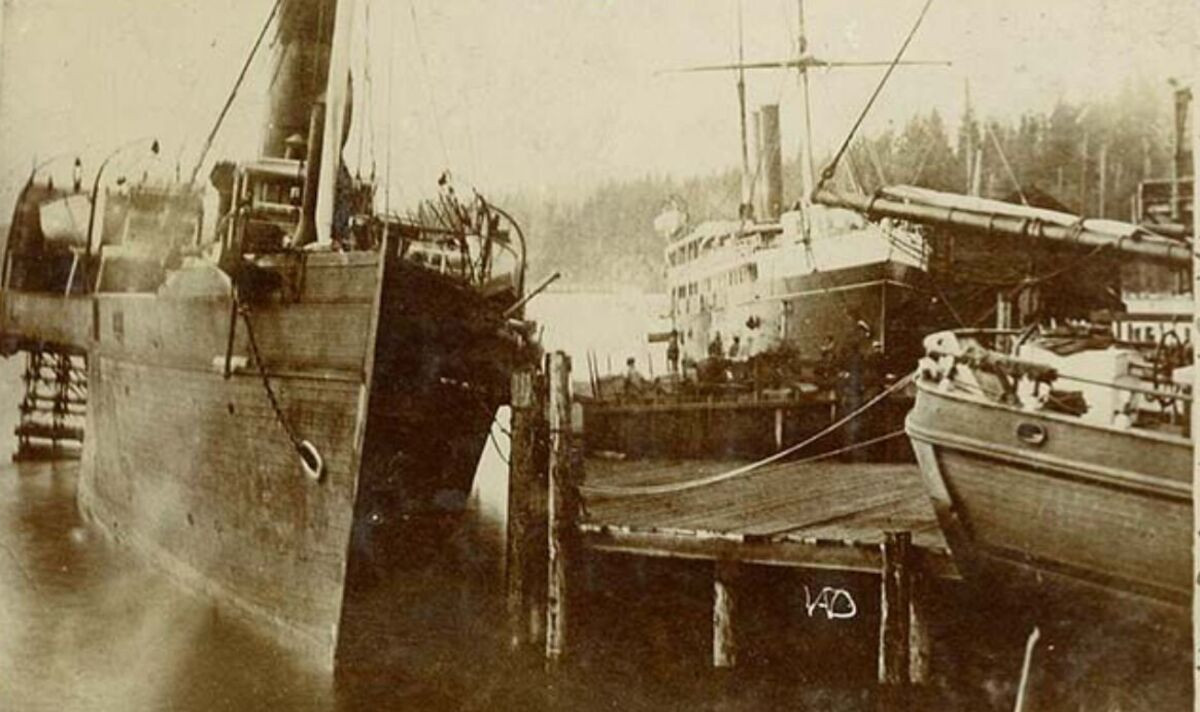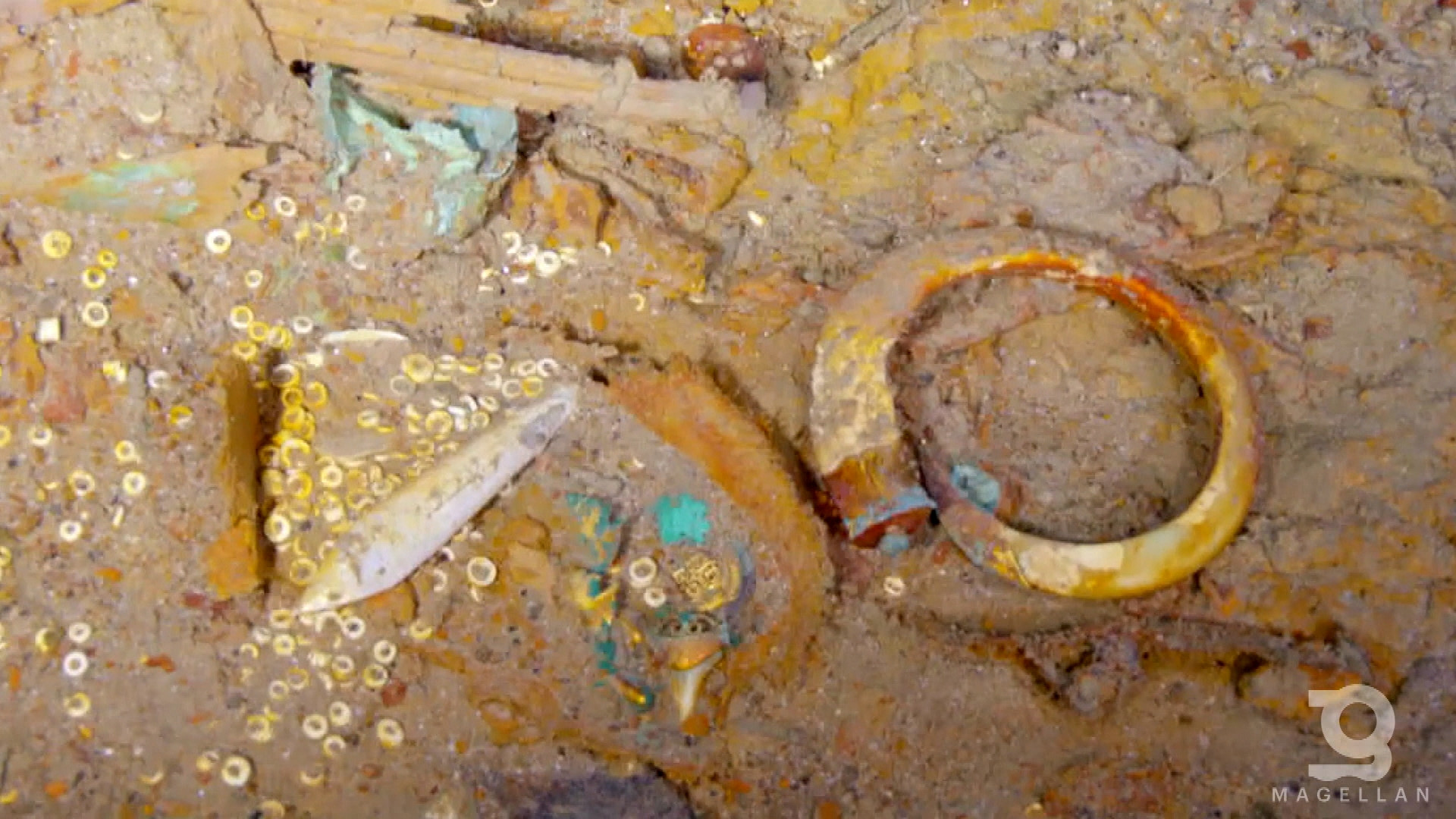A French ship that sank following an 1856 collision while on its maiden voyage has been found off the Massachusetts coast, according to a report.
For nearly 170 years, Le Lyonnais lay at the bottom of the Atlantic Ocean.
The fog-induced crash killed more than 100 passengers and crew members.
However, last month, a dive team — headed by two New Jersey residents — found its wreckage about 200 miles near the Massachusetts coast, The Boston Globe reported.
The state-of-the-art ship — equipped with an iron hull and an early steam engine supplementing its sails — Le Lyonnais was built in 1855 for transatlantic passenger and mail service, according to the outlet.
But the French vessel never made it home following its expedition from Le Havre to New York in January 1856 as it collided off Nantucket with the Adriatic, a sailing vessel from Maine on Nov. 2.
The crash left a hole in Le Lyonnais’ hull that caused it to capsize and sink to the ocean floor, The Globe reported.
Major players in the quest to find the wreckage were New Jersey residents Jennifer Sellitti and her partner Joe Mazraani, self-described “lawyers by day and shipwreck hunters on the weekend,” operating Atlantic Wreck Salvage LLC and the vessel D/V Tenacious.
“This one became a passion project for us over the last eight years,” Sellitti said.
Formerly a staff attorney for the Committee for Public Counsel Services in Massachusetts, Sellitti “became obsessed with this ship, and her story,” she told The Globe. “And every little piece of information I uncovered was this sort of this unraveling of what really is an incredible story about this collision.”
Sellitti’s research indicates 114 of 132 passengers and crew members on the doomed ship died.
Among those were Albert Sumner, the brother of abolitionist Massachusetts Sen. Charles Sumner, along with his wife and daughter; and John Gardiner Gibson, eldest son of Charles and Catherine Gibson, the first residents of Boston’s Gibson House Museum, the Globe reported.
An 1856 report in The New York Times said the collision took place “in a thick fog.”
The Adriatic’s captain, Jonathan Durham, initially expected Le Lyonnais would miss his ship, but after a light on the Adriatic was accidentally snuffed and relit, he saw that Le Lyonnais “had changed her course and was coming directly toward the [Adriatic],” the outlet reported.
The Times report said Le Lyonnais kept going after the collision “and was almost immediately out of sight in the fog.” Durham told the Times his crew “hailed the steamer, and requested them not to leave us, but received no answer.”
Those aboard Le Lyonnais ultimately abandoned ship for lifeboats and a makeshift raft, The Globe recounted.
The Adriatic, which had been bound for Savannah, Georgia, instead went to Gloucester, Massachusetts, for repairs, arriving “in distress” on Nov. 4.
Capt. Durham was later apprehended in France and stood trial for the collision, according to Sellitti, who has written a forthcoming book about the incident called “The Adriatic Affair: A Maritime Hit-and-Run off the Coast of Nantucket.”
To find Le Lyonnais, the team combined what Sellitti had researched with information about anomalies on the ocean floor, which initially came through conversations with fishermen in the area, she told The Globe. Later, the duo used sonar to scan the ocean depths and began exploratory dives of the unknown bumps and masses they were finding.
Assisting in the search was Capt. Eric Takakjian, who had begun looking for Le Lyonnais nearly a decade earlier.
Takakjian said the ship is historically significant.
“Her iron hull construction methods represented some of the earliest examples of that type of hull construction for oceangoing ships known to exist,” he said in a statement.
Last month, their dive crew spent five days in the water examining potential wreckage sites, “and one of those turned out to be it,” Sellitti said.
During Mazraani’s final dive on Aug. 25, he found rigging that confirmed the vessel had sails as well as the engine, Sellitti said.
Sellitti and Mazraani aren’t revealing the ship’s exact location because they plan to continue dives hoping to learn more about the ship’s final hours, according to The Globe.
The Discovery of Le Lyonnais
A team of divers from the Atlantic Wreck Salvage (AWS) company discovered the long-lost wreck of the French steamship Le Lyonnais, which sank in 1856 after a tragic collision off the coast of Massachusetts, while onboard their vessel, D/V Tenacious.
Le Lyonnais was an early steam-driven passenger liner built in 1855 by Laird & Sons of Birkenhead, England, for Compagnie Franco Americaine.
The vessel was part of a new fleet designed to transport mail and passengers between Le Havre, France, New York, and South America.
Le Lyonnais, measuring 272 feet (82.9 meters) in length and weighing 1,600 gross tons, featured a horizontal steam engine, sails, and two mid-19th-century innovations-a screw propeller and an iron hull.
On November 2, 1856, while returning from New York to France, the steamer collided with the American sailing vessel Adriatic off the coast of Nantucket due to heavy fog. The incident, which historians refer to as a “hit-and-run,” resulted in one of the worst maritime tragedies of the nineteenth century.
Despite Le Lyonnais flashing its lights and blowing its whistle, the Adriatic struck the steamer, causing a hole in the side. According to reports, the Adriatic continued on its journey, unaware of the harm it had caused.
Efforts to preserve the ship were immediate but ultimately unsuccessful. Passengers and crew attempted to reduce the weight of the vessel by throwing excess cargo overboard and sealing the hole with mattresses. Despite their attempts, the Le Lyonnais began to sink, forcing the crew to abandon the ship.
Six days later, only one lifeboat was discovered, with 12 survivors. The accident claimed the lives of 114 of the ship’s 132 passengers and crew. The tragedy and destruction of the ship were mostly forgotten, despite a brief mention in Jules Verne’s classic novel “20,000 Leagues Under the Sea.”
The AWS team, led by divers Andrew Donn, Eric Takakjian, Jennifer Sellitti, Joe Mazraani, Kurt Mintell, Tom Packer, and Tim Whitehead, began searching for the wreck in September 2023 by side-scanning possible underwater sites. They returned in August 2024 to dive on the targets and finally found the wreck of the Le Lyonnais.
One of the divers, Jennifer Sellitti, has written a book called “The Adriatic Affair: A Maritime Hit-and-Run Off the Coast of Nantucket,” which dives into the collision between Le Lyonnais and the Adriatic.
The book, published by Schiffer Publishing, will be available on February 28, 2025. It will include a newly written epilogue describing the wreck’s search and discovery and underwater and topside images from the expedition.
Le Lyonnais: A Legacy of Innovation and Tragedy
The ship, one of six planned for transatlantic service, represented major technological advances with its iron hull and screw propeller.
Although the discovery of Le Lyonnais brings closure to a tragic event, it also serves as a reminder of the inherent risks and unpredictable nature of maritime exploration. The ship’s final resting place, discovered after nearly two centuries, offers a glimpse into the past, revealing the fragility of human ambition and the enduring power of nature.
The team hopes to continue exploring the wreck, gleaning valuable insights into the ship's final moments and the technological advancements of its era. The discovery of Le Lyonnais is a testament to the tenacity of explorers and the enduring fascination with maritime mysteries.


















